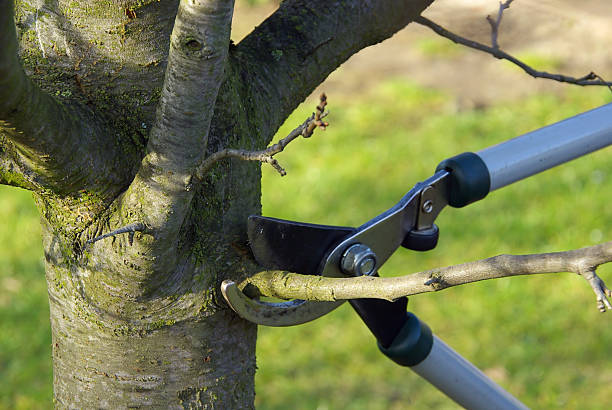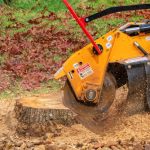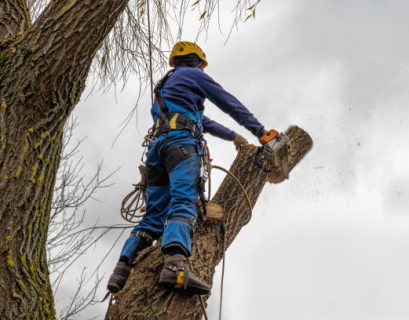Tree trimming plays a vital role in maintaining the health, aesthetics, and safety of trees in residential, commercial, and public spaces. Whether you have a single tree in your backyard or manage a large property with extensive greenery, understanding the essentials of tree trimming is crucial. This guide will cover the importance of tree trimming in Newport KY, effective techniques, and tips to achieve optimal results.
What is Tree Trimming?
Tree trimming involves the selective removal of branches to improve a tree’s health, shape, and safety. This process helps manage the tree’s growth while addressing potential hazards such as overgrown or damaged branches.
Importance of Tree Trimming
Enhancing Tree Health
Trimming removes diseased, dead, or insect-infested branches, preventing further decay and ensuring the tree remains healthy.
Promoting Growth
Pruning stimulates the growth of strong, healthy branches by allowing the tree to focus its resources on essential areas.
Safety and Hazard Prevention
Overgrown branches can pose risks during storms or high winds. Regular trimming reduces the likelihood of branches falling and causing damage.
Aesthetic Appeal
Shaping and maintaining the tree’s structure enhances its appearance and complements your property’s landscape.
Common Tree Trimming Techniques
Crown Thinning
Crown thinning involves removing select branches to increase light penetration and air circulation within the tree canopy. This technique is ideal for densely packed trees.
Crown Raising
This method removes lower branches to increase the clearance under the tree, making space for pedestrians, vehicles, or structures.
Crown Reduction
Crown reduction decreases the overall size of the tree by shortening branches. This is commonly done for trees near power lines or buildings.
Deadwooding
Deadwooding removes dead or decaying branches, reducing the risk of accidents and improving the tree’s overall health.
Tools Used for Tree Trimming
Hand Pruners
Best for small branches, twigs, and leaves.
Loppers
Effective for medium-sized branches, providing more leverage than hand pruners.
Pruning Saws
Designed for larger branches that are too thick for loppers.
Pole Pruners
Allow trimming of high branches without needing a ladder.
Chainsaws
Used for heavy-duty tasks like cutting thick branches or dead trees.
The Best Time for Tree Trimming
Tree trimming timing varies based on the tree species and your objectives. Here are general guidelines:
- Dormant Season: Trimming in late winter or early spring promotes growth as the tree prepares for its growing season.
- After Blooming: For flowering trees, trim after their blooming period to preserve the flowers for the following season.
- Emergency Trimming: Remove hazardous or broken branches immediately, regardless of the season.
Tree Trimming Safety Tips
Wear Protective Gear
Use gloves, safety glasses, and a helmet to protect yourself from falling debris.
Avoid Power Lines
Maintain a safe distance from power lines. Contact professionals for trees near utility lines.
Use Proper Tools
Ensure all tools are sharp, clean, and in good working condition to avoid accidents and achieve precise cuts.
Call Professionals for Large Trees
For tall or complex trees, hiring a professional arborist is safer and more efficient.
Professional Tree Trimming Services
Hiring certified arborists ensures the task is performed correctly, safely, and efficiently. Professionals bring expertise in identifying the tree’s needs and using the right techniques for trimming. Additionally, they handle challenging tasks such as trimming near power lines or using specialized equipment.
Tree Trimming Mistakes to Avoid
Over-Trimming
Removing too many branches at once can stress the tree and hinder its growth.
Topping
Cutting off the top of a tree can lead to weak growth and structural instability.
Ignoring Dead Branches
Neglecting deadwood can lead to decay, pests, and safety risks.
Improper Cuts
Poor trimming techniques, such as leaving stubs, can lead to infections and structural issues.
Environmental Benefits of Tree Trimming
Proper tree trimming contributes to a healthier environment by:
- Enhancing air quality through improved photosynthesis.
- Providing shelter for wildlife by maintaining robust branches.
- Reducing the risk of invasive species by promoting native tree growth.
FAQs
Q1. How often should trees be trimmed?
Most trees benefit from trimming every 3–5 years. However, fast-growing species or those in urban environments may require more frequent trimming.
Q2. Can I trim my trees myself?
You can handle minor trimming with the right tools and safety precautions. For large or hazardous trees, it’s best to hire a professional.
Q3. Is tree trimming the same as pruning?
While often used interchangeably, trimming focuses on shaping and safety, while pruning targets health and growth.
Q4. How much does professional tree trimming cost?
Costs vary based on tree size, location, and complexity, typically ranging between $200 and $800 per tree.
Q5. What happens if I don’t trim my trees?
Untrimmed trees can become overgrown, hazardous, and unhealthy, affecting their longevity and the safety of your property.
Conclusion
Professional tree trimming is an essential practice for maintaining healthy, safe, and attractive trees. Whether you choose to trim trees yourself or hire professionals, understanding the best practices and techniques ensures your greenery thrives for years to come. By prioritizing regular trimming, you contribute to a beautiful, safe, and sustainable environment.










